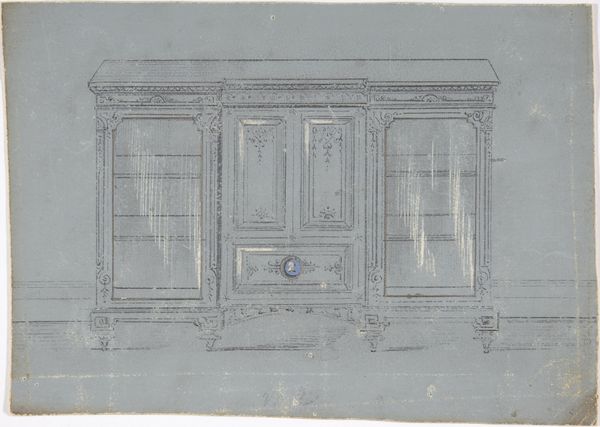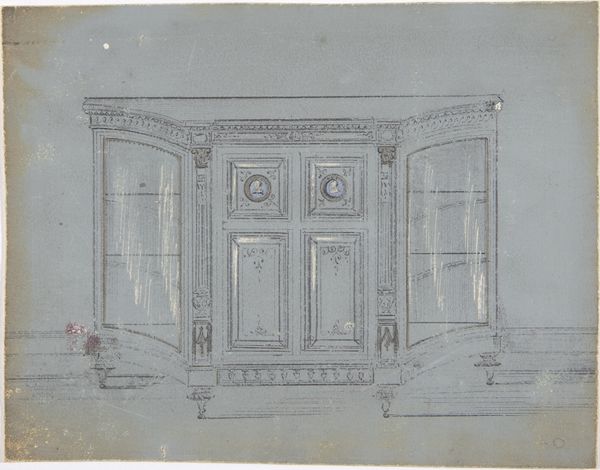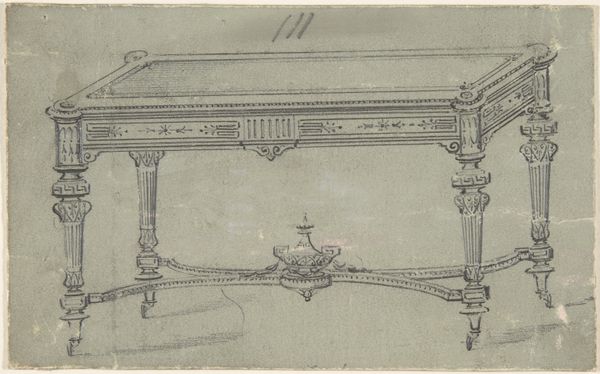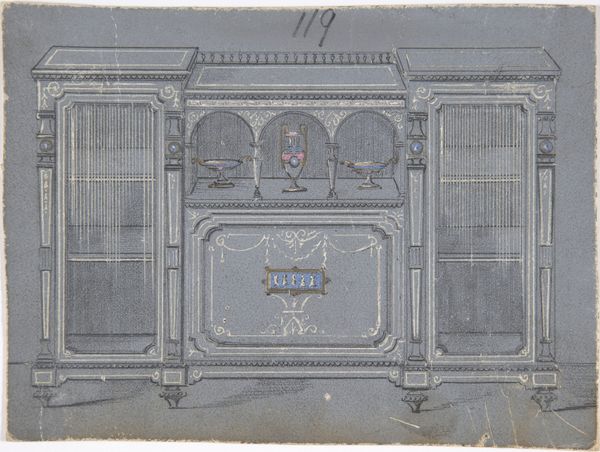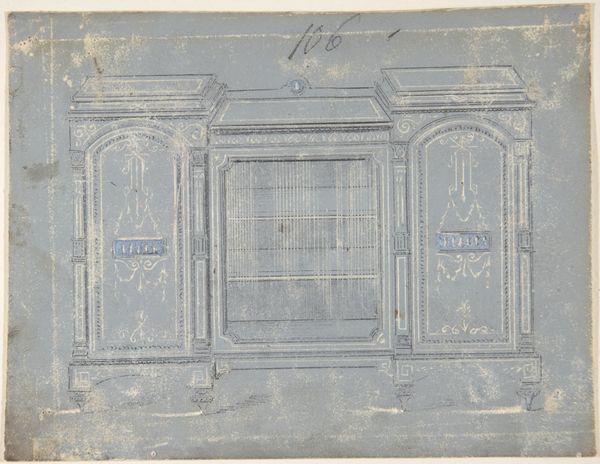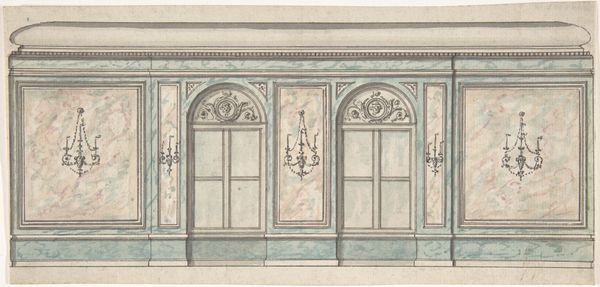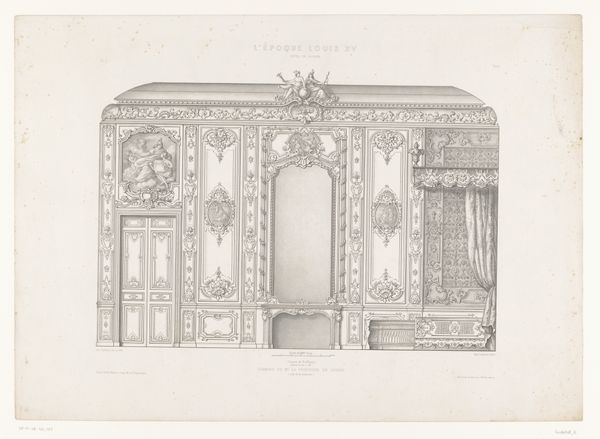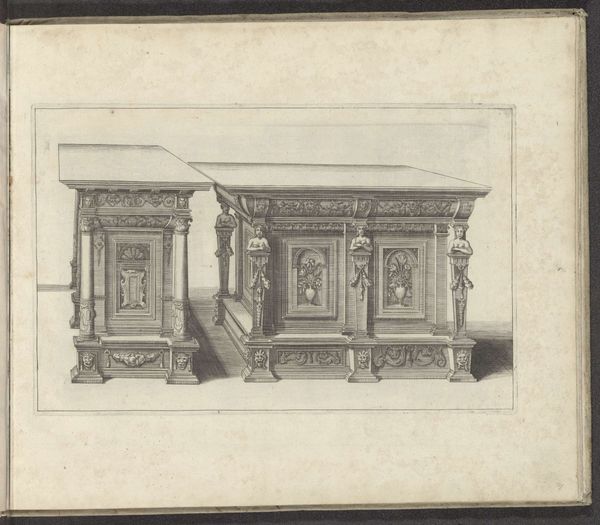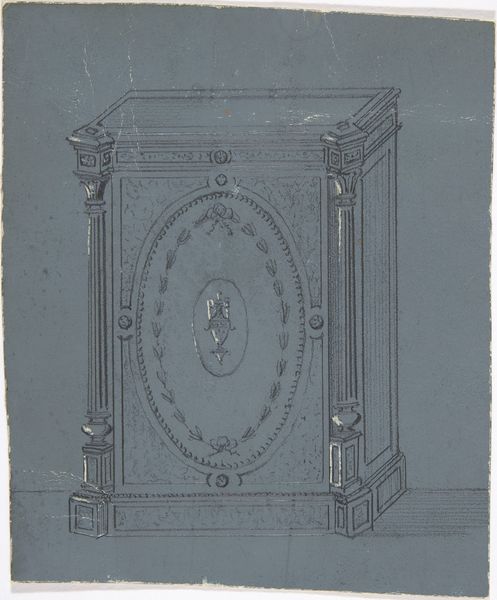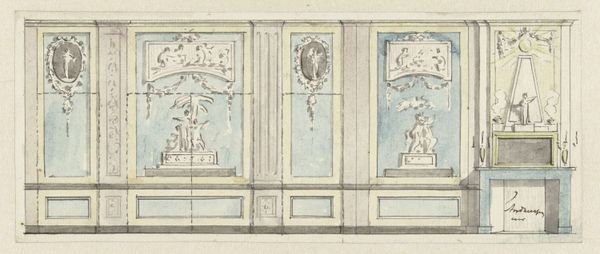
Design for a Cabinet with Three Glass Doors and a Porcelain Plaque 1800 - 1900
0:00
0:00
drawing, paper, pencil, architecture
#
drawing
#
neoclacissism
#
paper
#
pencil
#
architecture drawing
#
decorative-art
#
architecture
Dimensions: each sheet less than: 8 x 9 in. (20.3 x 22.9 cm)
Copyright: Public Domain
Curator: Here we have a pencil drawing on paper titled “Design for a Cabinet with Three Glass Doors and a Porcelain Plaque,” likely created between 1800 and 1900 by an anonymous artist. It's currently housed at the Metropolitan Museum of Art. Editor: My immediate impression is one of restrained elegance. The detail in the pencil work is quite remarkable, but there's a definite formality to it. It feels almost…icy. Curator: The Neoclassical influence is unmistakable, right? The drawing depicts a cabinet meant for display and storage, replete with classical columns and decorative ornamentation. It's more than just furniture; it's an expression of status and refined taste. Editor: Absolutely, the social and cultural history just screams from this design! One can almost imagine this piece in a wealthy household of that time, filled with precious porcelain and fine glass. But look at how carefully the different materials, real or implied, are rendered - the weight of that urn shape in the niche, the implied gleam of the glazed porcelain… Curator: Speaking of materials, let’s not forget that the production of such a cabinet would involve skilled labor across several artisanal fields: carpentry, glassmaking, porcelain production…all converging on this one piece of furniture as a symbol of luxury. What kind of access do ordinary folks have to such displays of artistry? Editor: Indeed, thinking about that anonymous designer makes you wonder how much control this person had over materials sourcing, construction choices… They left their mark, their craftsmanship, and that impacts our world today. Curator: It all leads back to consumption, doesn’t it? The cabinet isn't simply for function; it's a vehicle for displaying wealth and, by extension, power. And those objects INSIDE have histories as well. Editor: Precisely, which makes the Met such an appropriate venue for it! Curator: True. By presenting this design, we invite reflection on the cultural values embedded within objects and spaces of the past. Editor: So, ultimately, it's not just about appreciating pretty design, it’s about understanding the socio-economic context. Curator: Precisely, a look at this architectural drawing is a lesson about those material realities and what gets placed inside that structure as well! Editor: A good reminder to ask more questions and investigate those supply chains!
Comments
No comments
Be the first to comment and join the conversation on the ultimate creative platform.
